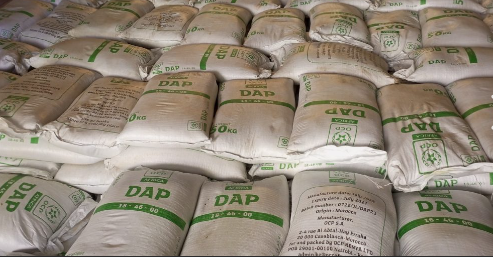The cost of fertiliser is still beyond the reach of many farmers across the country posing the risk of low-quality produce, despite efforts by the government to introduce subsidized fertilisers, according to The latest Agriculture Survey by the Central Bank of Kenya (CBK).
- The survey found that farmers face several barriers in accessing farm inputs, but the most severe is the high costs – especially in relation to fertilizer, seeds, and pesticides.
- More than 90 percent of the sampled farmers cited the high cost of farm inputs was cited by as a binding constraint to accessing farm inputs.
- Other challenges include lack of finance and the high cost of mechanization.
The proportion of sampled farmers who reported having accessed government subsidized fertiliser has been more than 50 percent since the January 2024 survey. The proportion reported was 53 percent in January 2024, 67 percent in March 2024, 71 percent in May 2024 and 60 percent in July 2024.
The lower intake in some months reflects seasonal factors as intake is likely to be higher just before the rain season. The reasons given in the July 2024 survey for not being able to access the subsidised fertilizer were similar to those given in the previous surveys in May 2024, March and January. Some farmers indicated that they did not get because it was costly to pay for transport to reach the collection centres, e.g. the nearest NCPB depots. Others reported that they were notified through their mobile phones to go to the nearest NCPB depot to collect the subsidised fertiliser, but failed to go thinking they would not get due to the large number of farmers that sought to get the fertilizer. In other instances, sampled farmers reported that they did not bother to register for the subsidised fertiliser.
In other instances, some farmers reported that they were not aware that subsidized fertilizer was available at a reasonable price. Other farmers cited the complications around the logistics of access, and that the demand for the subsidised fertiliser was too high relative to supply. In some cases, priority was given to farmers who were members of a farming group, making it difficult for those who did not belong to any farming group to benefit from the subsidised fertiliser.
This Agriculture Sector Survey report summarizes findings from the July 2024 survey conducted from July 18-22, 2024.
About 40 percent of the sampled farmers reported to have obtained loans from various sources in July 2024 with increases in the proportion of respondents who reported having borrowed from the Hustler fund, sellers of farm produce, friends and family and co-operative societies, compared to May 2024. The main sources of finance for farmers have continued to be banks, SACCOs, and digital loans.




